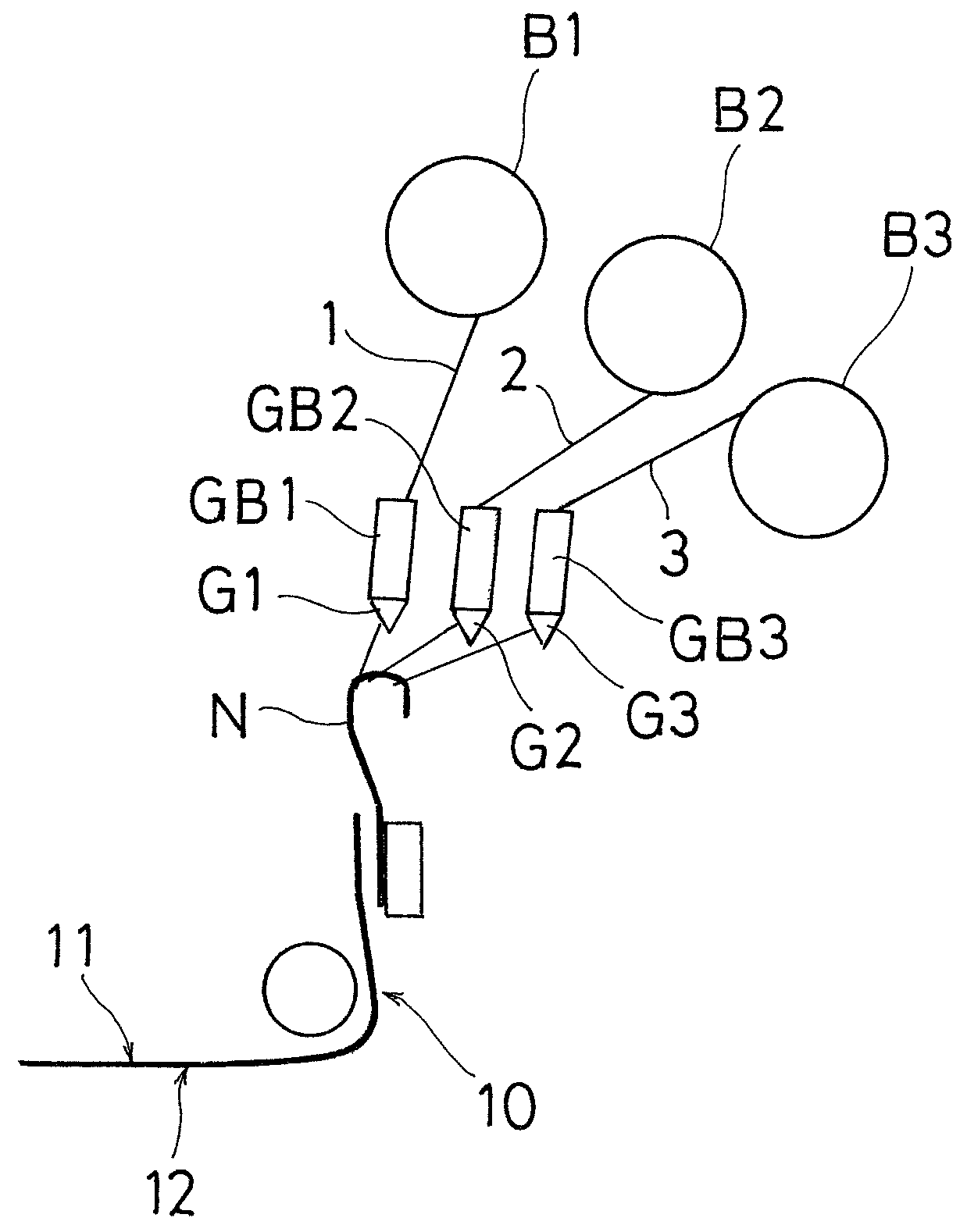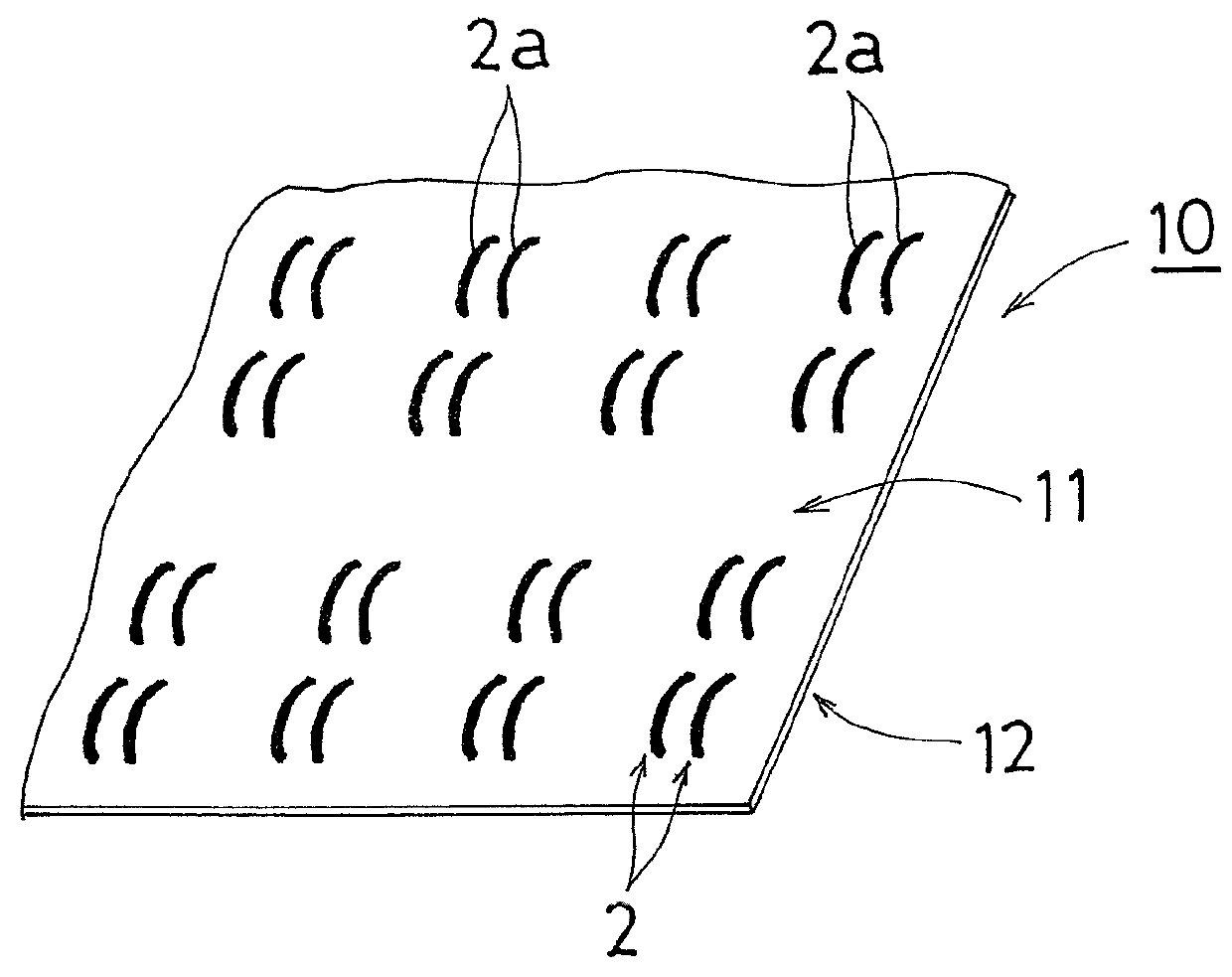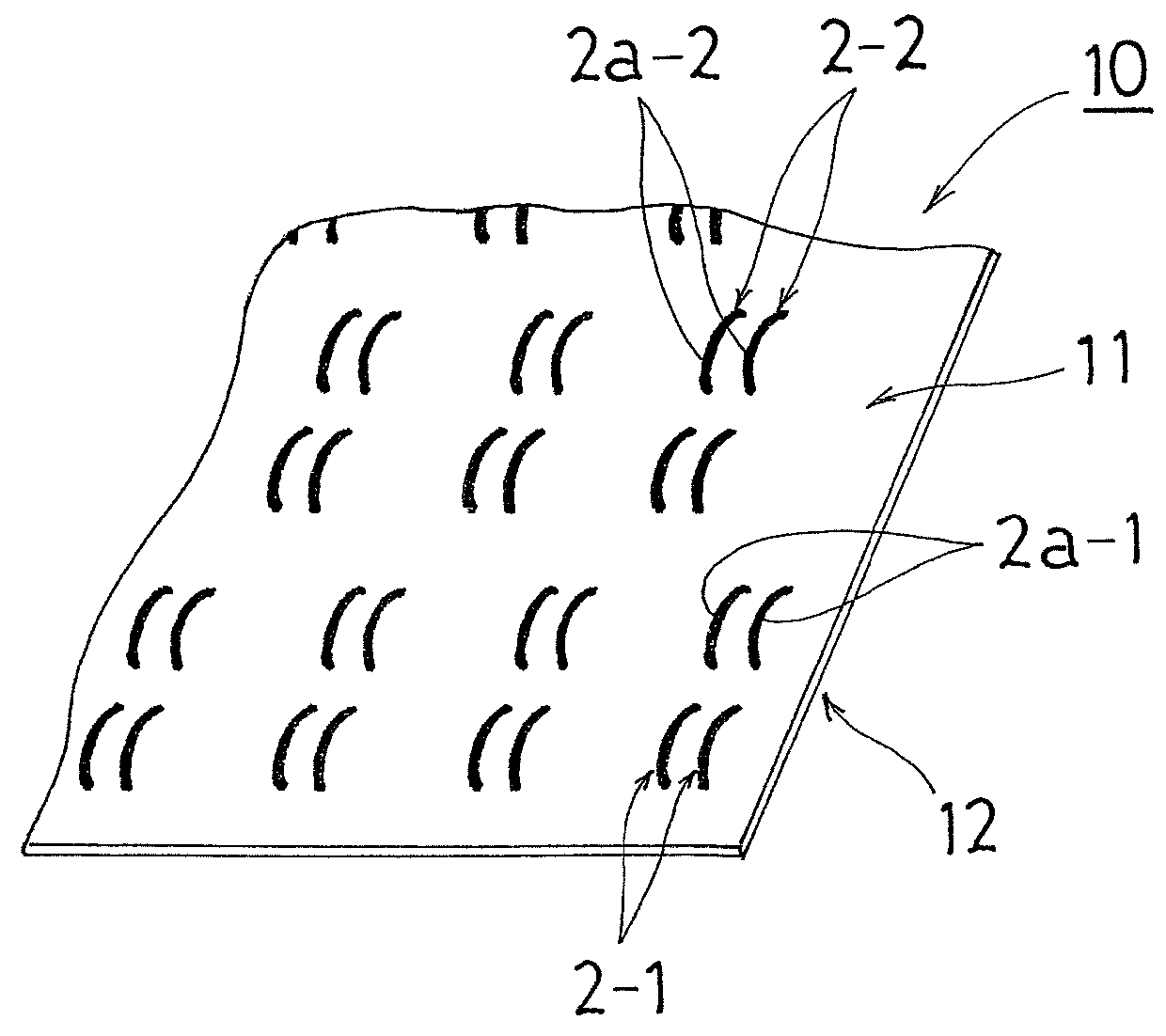Warp knitted fabric and method of manufacturing same
a technology of knitted fabric and manufacturing method, which is applied in the field of warp knitted fabric, can solve the problems of increased weight, stickiness or dampness at the time of sweating, and configurations that are not effective at resolving stickiness and damp, and achieves improved air permeability, light weight, and anti-pilling performan
- Summary
- Abstract
- Description
- Claims
- Application Information
AI Technical Summary
Benefits of technology
Problems solved by technology
Method used
Image
Examples
example 1
[0093]A 28-gauge tricot knitting machine having three guide bars (HKS3M: MEYER JAPAN Co., Ltd.) was used, and a warp knitted fabric was knitted by forming a cord texture (three-needle underlap) by introducing a full set of polyester multi-filament yarns of 167 dtex / 48 f to the front guide bar GB1 as base yarns, an insertion texture by introducing the polyester multi-filament yarns of 330 dtex / 96 f in a 2-in 4-out pattern to the middle guide bar GB2 as insertion yarns, and a denbigh texture by introducing a full set of the polyester multi-filament yarns of 84 dtex / 36 f to the back guide bar GB3 as another base yarns, as illustrated in FIG. 6. At this time, the number of courses on which insertion yarns are exposed at a sinker-loop-side surface continuously in a warp direction was four, and the number of hidden courses without being exposed was four.
[0094]The obtained warp knitted fabric was preset for one minute at 190° C., then was dyed at 130° C. and dried, and then was set for fin...
example 2
[0097]A 28-gauge tricot knitting machine having four guide bars (HKS4M: MEYER JAPAN Co., Ltd.) was used. A warp knitted fabric was knitted by forming insertion textures with underlapped courses at different positions by introducing by using the two guide bars (middle guide bars) GB2-1, GB2-2, and knitting base yarns as in Example 1 by using a front guide bar GB1 and a back guide bar GB3 as illustrated in FIG. 7. The insertion textures are formed by using GB2-1 and GB2-2, by introducing polyester multifilament red spun-colored yarns of 330 dtex / 96 f to the middle guide bar GB2-1 as the insertion yarns and polyester multifilament blue spun-colored yarns of 330 dtex / 96 f to the middle guide bar GB2-2 as the insertion yarns. Each of the red spun-colored yarns and the blue spun-colored yarns are introduced alternately in a 2-in 8-out pattern. At this time, the number of courses on which insertion yarns are exposed at a sinker-loop-side surface continuously in a warp direction was four, a...
example 3
[0101]The same tricot knitting machine as in Example 1 was used, and a warp knitted fabric was knitted by forming a cord texture (three-needle underlap) by introducing a full set of polyester multi-filament yarns of 220 dtex / 48 f to the front guide bar GB1 as base yarns, an insertion texture formed with loops (looping) only on the course before and after an underlapped portion by introducing the polyester multi-filament yarns of 167 dtex / 48 f in a 2-in 4-out pattern to the middle guide bar GB2 as insertion yarns, and a denbigh texture by introducing a full set of the polyester multifilament yarns of 84 dtex / 36 f to the back guide bar GB3 as another base yarns, as illustrated in FIG. 8. At this time, the number of courses on which the insertion yarns are exposed at a sinker-loop-side surface continuously in the warp direction was four, and the number of hidden courses without being exposed was four.
[0102]The obtained warp knitted fabric was finished in the same manner as Example 1 an...
PUM
| Property | Measurement | Unit |
|---|---|---|
| RH | aaaaa | aaaaa |
| temperature | aaaaa | aaaaa |
| width | aaaaa | aaaaa |
Abstract
Description
Claims
Application Information
 Login to View More
Login to View More - R&D
- Intellectual Property
- Life Sciences
- Materials
- Tech Scout
- Unparalleled Data Quality
- Higher Quality Content
- 60% Fewer Hallucinations
Browse by: Latest US Patents, China's latest patents, Technical Efficacy Thesaurus, Application Domain, Technology Topic, Popular Technical Reports.
© 2025 PatSnap. All rights reserved.Legal|Privacy policy|Modern Slavery Act Transparency Statement|Sitemap|About US| Contact US: help@patsnap.com



